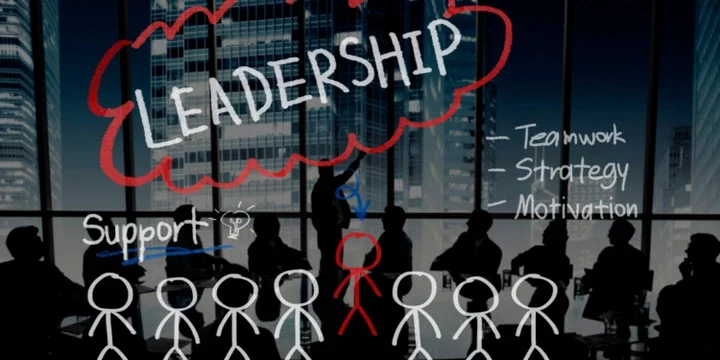
Maybe you've heard it said that leaders are born, not made. Or perhaps someone told you that great leaders stand out from the crowd. But what does it really mean to be a leader? The truth is that leadership can't be boiled down to a single pithy quote or description. Leadership is complex with many nuanced definitions.
In this article, we'll explore 7 definitions of leadership so you can get a well-rounded perspective. We'll cover the traits, behaviors, and qualities that make up great leaders. You may be surprised to find that some of these definitions describe you. Read on to learn more about what it takes to lead effectively and impactfully.
Overview of Leadership
Leadership is the ability to inspire and motivate others. As a leader, your role is to help others reach their full potential. The core of leadership is influence. Effective leaders can shape the attitudes and behaviors of others through motivation, communication, and guidance.
There are three main leadership styles:
Autocratic leaders make decisions without consulting their team. This can be useful in a crisis but often leads to poor morale.
Democratic leaders make collaborative decisions by soliciting input from their team. This leads to high engagement but can be slow.
Laissez-faire leaders give their team a high degree of independence and authority. This works well with highly skilled teams but can lead to lack of direction.
Key Traits of a Good Leader
Good leaders demonstrate certain traits like:
Vision: Leaders see the bigger picture and help others understand how they contribute to key goals. They articulate a compelling vision of the future that motivates and inspires.
Communication: Leaders are skilled communicators who listen well and share information in a transparent, engaging way. They give constructive feedback and mentor others.
Integrity: Effective leaders build trust through honesty, accountability, and leading by example. They do what is right, not just what is easy.
Confidence: Leaders exude self-assurance and help others feel confident in their abilities. They make decisions, even difficult ones, and accept responsibility for outcomes.
Empathy: Compassionate leaders show they care by being available, paying attention to morale, and considering how decisions impact others. They make people feel heard, understood and valued.
Creativity: They think outside the box and find innovative solutions to problems.
Focus: They establish clear goals and priorities to keep their team motivated and on track.
Innovation: Strong leaders think outside the box and find new ways of doing things that create value. They encourage creativity and risk-taking in others.
Great leaders positively impact those around them through a combination of these qualities. They get results by empowering and developing others to achieve shared goals. Overall, leadership is a journey, not a destination. Strong leaders never stop learning and improving.
7 Definitions of Leadership
Leadership can be defined in many ways. Here we'll explore seven common definitions to gain insight into this complex concept.
Leadership is the Ability to Exude Confidence and Attract Followers
To be a great leader, you need to project confidence and charisma. People will only follow those they believe in and trust. Build Your Confidence The most confident leaders are those who know themselves well. Identify your strengths and values, then play to them. Accept yourself for who you are, flaws and all. No one is perfect, so focus on continuous self-improvement rather than perfection.
Confident leaders have a clear vision and purpose. They know where they want to go and why. Share your vision with passion and help others see what you see. Paint a vivid picture of the future that will inspire people to come along on the journey with you.
Charismatic leaders have a certain charm or appeal that makes others want to follow them. Smile, make eye contact, and engage people with genuine warmth and enthusiasm. Charismatic leaders also listen well and show interest in others. People will be drawn to someone who makes them feel good about themselves.
To sum up, leadership requires confidence in yourself and your purpose, as well as the ability to attract followers through charisma and inspiration. Believe in yourself, share an exciting vision, and connect with people in a meaningful way. Do this, and you'll be well on your way to becoming an influential leader.
Leadership Is Setting a Direction
A good leader sets a clear direction and vision for their team. They define where the group is headed and the goals that will get them there. As a leader, think about where you want your team or organization to be in the next few months or years. Then determine the necessary steps to achieve that vision. Share this direction and vision with your team to give them guidance and motivation.
When setting direction, it's important to be specific while also giving team members flexibility in how they accomplish goals. Provide concrete objectives but give people room for creativity. For example, instead of just saying "sell more products," set a specific and measurable sales target. But let team members determine how best to reach that target.
Setting direction also means regularly evaluating progress and making adjustments as needed. Meet with your team often to assess what's working, see if the vision or key milestones need to change based on internal or external factors, and make sure people feel supported in their efforts to achieve the shared goals.
Leadership Is Aligning People
Leadership is the art of motivating and aligning people around a shared vision and set of values to achieve a common goal. As a leader, you need to articulate a clear vision of where you want the team or organization to go. But simply having a vision is not enough. You need to get buy-in from the people who can make that vision a reality.
This means communicating the vision frequently and passionately, connecting it to the values and priorities of your team members. It means listening to their concerns and feedback, and adapting the vision if needed to ensure it aligns with their needs and motivations. It also means leading by example through your own behaviors and actions.
When people feel invested in the vision and trust in your leadership, they will come together and work hard to achieve the goal. But without that alignment and shared sense of purpose, a team will fracture into individuals working toward their own agendas. Leadership is ultimately about creating unity and channeling the collective efforts of a group toward a common goal. That is why aligning people is so central to good leadership.
Leadership Is Motivating and Inspiring Others
As a leader, your role is to motivate and inspire your team. This means igniting their passions and enthusiasm for the work at hand. Help them see the importance and impact of their efforts. Paint a vivid picture of the future you're trying to create together. Recognize and reward them when they achieve key milestones along the way.
Your optimism and energy are contagious. Share stories of small wins and progress to keep motivation high. Express confidence in your team's abilities and reframe setbacks as learning opportunities. Provide the support and resources they need to develop their skills. Help them gain new perspectives through coaching and mentorship.
When motivation starts to wane, inspire your team by reminding them of the meaningful purpose behind their work. Reconnect them to the vision and values of your organization. Highlight the difference they are making through their contributions. Your ability to motivate and inspire others is key to success as an effective leader. Keep your team engaged and driving towards the future you envision together.
Leadership Is Producing Change
Leadership means driving real, tangible changes. As a leader, you need to recognize opportunities for improvement and growth, develop a vision, and motivate your team to work together toward achieving that vision. To lead effectively, you must be willing to challenge the status quo and push for progress. This often means persuading people to adopt new mindsets and habits, which can be difficult. Strong leaders are able to rally others around a meaningful purpose and help them see the benefits of change.
To summarize, leadership is not a title or position. It is an active process of pioneering new directions, overcoming hurdles, and motivating collective action. Effective leaders have the courage and resolve to drive meaningful change.
Leadership Is Achieving Results
To be a leader means getting things done. Leadership is defined by results, not attributes or qualities alone. As a leader, your role is to motivate and inspire your team to accomplish key objectives and achieve meaningful outcomes.
How do you accomplish this? Start by developing a clear vision and strategy. Communicate the vision and key priorities to your team. Then, equip and empower them with the skills, resources, and support they need to execute. However, do not micromanage them, give them space to work independently and figure things out on their own.
Your job is to coach and guide them along the way. Check-in regularly to evaluate progress and make any necessary adjustments to keep everyone on track. When obstacles arise, help your team navigate around them. Celebrate wins, both big and small, to keep morale and motivation high.
Ultimately, leadership comes down to rallying people around a common goal and enabling them to achieve peak performance. The results you drive and the impact you make through others define your effectiveness as a leader. If you want to lead, focus on outcomes, not attributes. What matters most is getting the job done.
Leadership is the Ability to Create Innovation
Innovation is the key to growth in any organization. Leaders who can foster an environment of creativity and progressive thinking are able to propel their teams and companies forward.
As a leader, your role is to empower your team to think outside the box. Challenge them to question the status quo and conventional wisdom. Encourage them to take calculated risks and learn from failures. Help them understand that not every idea will be a breakthrough, but cultivating the ability to envision change will lead to new opportunities.
Provide the resources and support for experimentation. Innovation is born from exploration, so give your team freedom to brainstorm new concepts and the means to develop prototypes. Guide them through the creative process with an open and curious mindset.
Most importantly, lead by example through your own innovative thinking. New ideas often come from looking at problems in new ways, so continue to expand your knowledge and expose yourself to different perspectives. Your team will follow your lead.
With the ability to foster innovation, you can turn challenges into chances for growth and motivate your team to achieve their full potential. Leadership is not just about overseeing the status quo but having the vision and skill to inspire real and lasting change.
Frequently Asked Questions about Leadership
Have some burning questions about leadership? Here are a few of the common FAQs:
What exactly is leadership?
Leadership is the ability to influence and guide others toward a common goal. Good leaders motivate and inspire people through effective communication and by setting a clear vision and strategic direction. Leadership is about teamwork, problem-solving, adaptability, and empowering others.
Can leadership be learned?
Leadership skills can absolutely be learned and developed over time. Some key traits of good leaders, like integrity and vision, are innate. However, leadership abilities such as communication, motivation, delegation, and strategic thinking can all be strengthened through practice and experience. Leadership training programs, coaching, and continuous self-improvement and learning are excellent ways to enhance your leadership skills.
What makes a good leader?
A good leader inspires and motivates their team. Key traits include: vision, integrity, communication, and confidence. Good leaders lead by example and help others reach their full potential.
Are leaders born or made?
Leadership ability is developed over time through a combination of natural talent, experience, and conscious effort. Some key leadership qualities may come more naturally to certain people, but leadership skills can absolutely be learned and improved upon. With practice and persistence, anyone can become an effective leader.
What's the difference between leadership and management?
Leadership and management are related but different. Leaders inspire and motivate, focusing on vision and strategy. Managers plan and organize, focusing on implementation and results. Strong organizations need both leadership and management to thrive. The most effective leaders are often skilled managers as well.
How do I become a leader?
Becoming a leader takes continuous self-improvement and practice. Focus on developing key leadership qualities, build your expertise, communicate your vision, and mentor others. Look for opportunities to lead, start with small teams, get feedback, and learn from both successes and failures. Leadership is a journey, not a destination. With hard work and persistence, you can become a leader.
Conclusion
So there you have it, 7 definitions of leadership from different perspectives. While they all have unique elements, at their core is the ability to inspire and motivate others towards a common goal or vision. As you reflect on your own leadership journey, think about which definitions resonate most. Maybe your style is a blend of several. The important thing is to be self-aware, continue learning and growing, and apply your gifts in a way that benefits your team and organization. The people you lead will be better off for it. And you'll likely find greater fulfillment in the process.

















Comments